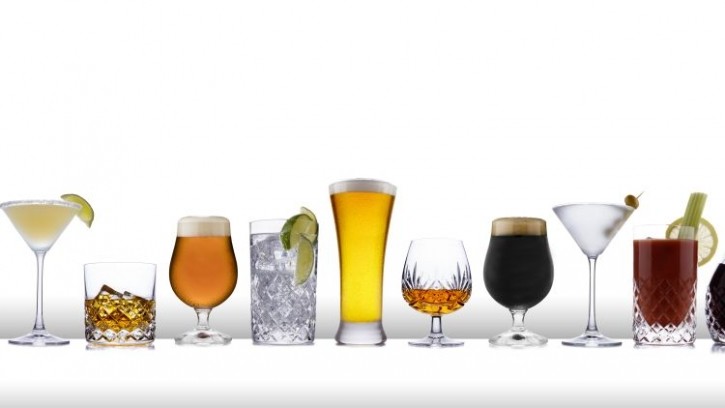How are alcohol duty rates changing?

HMRC, which administers alcohol duty, said the changes were ‘the biggest alcohol duty reforms in 140 years' and claimed it would make the system ‘fairer and responsible to new products entering the market as consumer tastes evolve’.
Exchequer secretary to the Treasury Gareth Davies said: “Because we left the EU, we can make sure our alcohol duty system works for us.
“From next month (August), the whole system will be simpler – the duty will reflect the strength of the drink.
“We will also protect pubs and brewers with our Brexit Pubs Guarantee keeping draught duty down and a new small producer relief.”
The Wine & Spirit Trade Association previously warned many small and medium-sized businesses would be at risk as a result of the changes.
Chief executive Miles Beale called for the increases to be scrapped. He said: “We are careering towards an extremely tough period for wine and spirit businesses with tax hikes and other costs, including a prolonged cost-of-living crisis for their consumers, persistently high inflation – especially for food and drink – and rocketing prices for glass, leaving little room for many businesses to turn a profit.
“Inevitably some won’t be able to stay afloat, with SMEs most at risk.
“Among all this pressure, the Government has chosen to impose inflationary misery on consumers on 1 August, with the biggest single alcohol duty increase in almost 50 years. But it’s not too late to scrap these crippling duty hikes.”
Beale highlighted the impact of the changes on the wine and spirits categories and drinks producers.
Price hikes
“Ultimately, the Government’s new duty regime discriminates against premium spirits and wine more than other products,” he added.
“Wine from hotter countries – like new trade deal partner Australia – will be penalised most of all because the grapes grown in hotter climates naturally produce higher alcohol wines.
“At the same time, you cannot reduce alcohol in wine like you can for some other products. Making wine isn’t an industrial process. Reducing wine’s alcoholic content is limited, changes the product and is costly to carry out.
“Nor can the alcohol in full strength spirits be reduced for products such as gin, vodka and whisky where a minimum strength is prescribed by law.”
He estimated the amount prices will rise for both drinks segments once the new duty rates come into force.
The trade body boss said: “In the end, the Sunak-Hunt changes to wine duty will reduce consumer choice and push up prices. For spirits, you can expect at least a £1 increase on a bottle of gin or vodka and a leap of £1 per bottle of wine when duty is increased by 20% (+VAT).
“Wine and spirits businesses are looking to find ways to keep their products affordable but there is no quick fix and there are too many tax and costs increases and too few options – especially for wine and full strength premium spirits where reducing ABV simply isn’t realistic.”
Alcohol duty system until 31 July 2023
Until the end of the month, alcoholic drinks are classed in four categories – beer, cider and perry (with differences for sparkling and still), wine and made-wine (sparkling or still) and spirits.
Different duty rates apply to each of the categories at a fixed rate and apply at the same rate regardless of where the product is sold (i.e. in the on or off-trade).
Duty structures
Beer and spirits are taxed based on ABV while other categories are taxed by a specific duty. According to the Government most wines, made-wines, ciders and perries are taxed on the total volume of the product instead of the total volume made up of pure alcohol.
However, among the products taxed on volume, there are separate bands that increased duty rates according to ABV as well, creating a system where products of the same ABV could be taxed at significantly different rates.
Exemptions and reliefs
Currently, small breweries have to have produced no more than 60,000 hectolitres of beer in the previous calendar year and set to produce around 60,000 hectolitres in the next calendar year. The rate of relief decreases the closer to 60,000 hectolitres the level of production gets.
Also, breweries producing under 5,000 hectolitres qualify for the full rate relief. Furthermore, small cidermakers producing under 70 hectolitres of cider in any 12-month rolling period are relieved from paying cider duty.
From 1 August onwards
From next month, the new alcohol duty system broadly taxes alcoholic products more the stronger they get. Different rates will apply to products between 3.5% ABV and 8.4%.
On the same date, the new Small Producer Relief will also be implemented, which the Government stated will increase the scope of the existing Small Brewers’ Relief to include producers of all alcoholic products up to 8.4% ABV.
Again from the 1 August, a new relief will be available on products below 8.5% ABV sold on site at pubs.
The ‘draught relief’ will cut alcohol duty, according to the Government, by 9.2% for beer and cider and by almost a quarter (23%) on wines, spirits and other fermented products.








